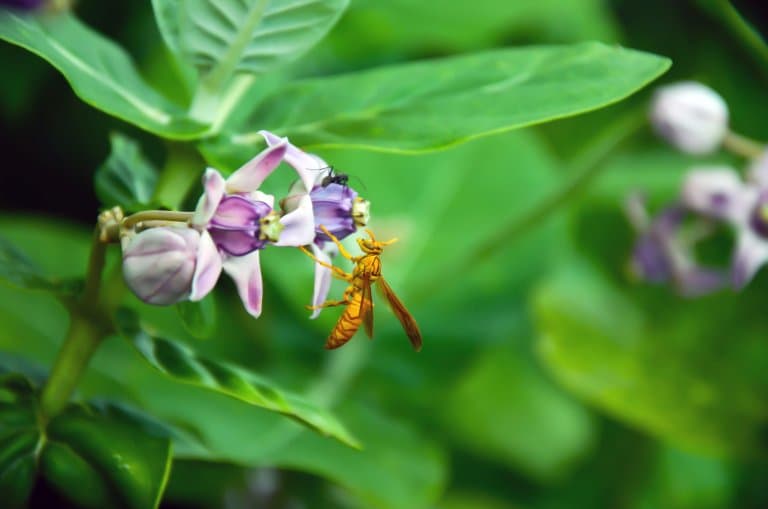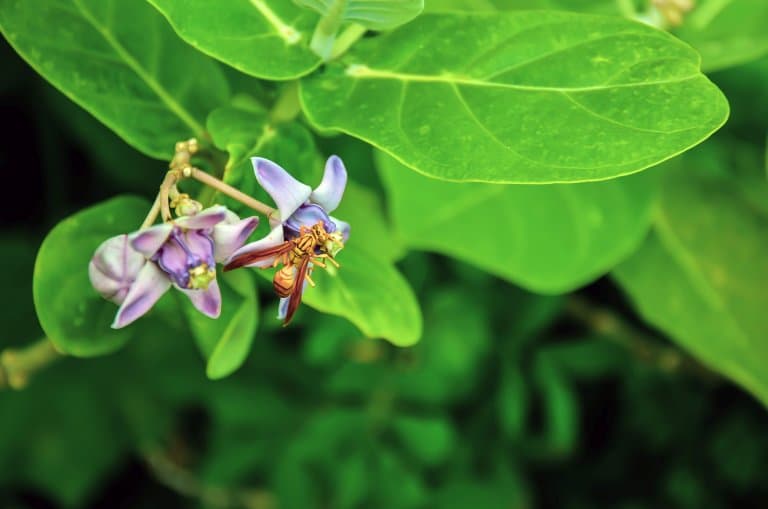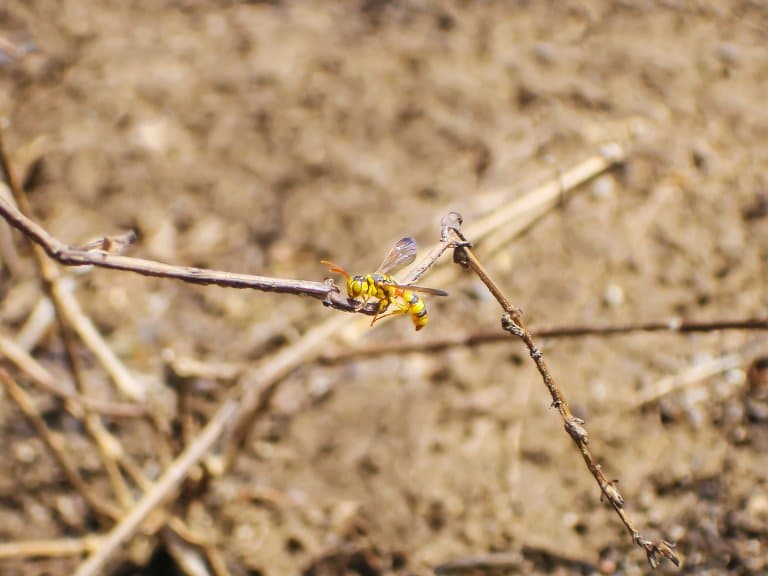Executioner Wasp Profile
Wasps, as a whole, get a bad rap. Depending on who you ask, there are between 100,000 and close to a million species of wasp. This makes that time you got stung at a picnic when trying to kill one of them an unfair representation of wasp-kind, and a generalisation you’d be rightly chastised for if the victim was human.
Wasps are important pollinators, pest control, and ecosystem regulators. They generally mind their own business, and on the occasion that they sting, it’s usually because you invaded their space. And it is their space: they’ve been here for over 240 million years.
The Executioner Wasp is a very large, yellow and brown paper wasp native to Central and South America. It has mandible that contains teeth, and can grow up to 3 cm in size!
Its name is in reference to its painful sting, which is claimed to be more painful than the Asian Giant Hornet and Bullet ant, and has given them a notorious reputation.

Executioner Wasp Facts Overview
| Habitat: | Humid coastal areas, often wooded |
| Location: | Central and South America |
| Lifespan: | Unknown |
| Size: | 27mm (1 inch) |
| Weight: | >1g |
| Color: | Yellow-brown and black |
| Diet: | Nectar and invertebrates |
| Predators: | Birds |
| Top Speed: | Unknown |
| No. of Species: |
1 |
| Conservation Status: |
Not Listed (IUCN) |
Despite the name, these are docile wasps, generally found minding their own business with the kind of peaceful contentment of a particularly dangerous animal.
They inhabit humid coastal regions, tropical forests, wooded and open areas in Central and South America.
Although it is not a particularly aggressive wasp species, it has earned a reputation for its strong sting in many Latin American countries.
Still, while capable of causing plenty of pain, they’re not remotely dangerous and, as wasps, are actually far more socially and behaviourally complex than they get credit for.
Interesting Executioner Wasp Facts
1. Their name translates to ‘Executioner’ or ‘Hangman’
This Wasp did not had an English name for a long time because it is native to non-English speaking areas. In 2010, ‘Polistes Carnifex’ was given the nickname the ‘Executioner Wasp’.
The name is derived from the Latin meaning of the species name “carnifex,” which translates to “hangman” or “executioner.”

2. You tell them apart from their genitals
While P. carnifex is one of the largest wasps in the genus, there are many look-alikes. Identifying the species from a distance can be straightforward if there’s enough information to go on, but if not, you’ll have to get a closer look.
Insects in general often have weird junk. The uniqueness of the genitals in each species makes them a great way to identify who’s who – if you’re willing to get that close.
And so, if you want to check the species, look at its penis. The male executioner wasp has a number of defining characteristics in its genitals, the most remarkable of which is the row of 27 teeth along its length. 1
3. They have small, peaceful communities
If you’re not willing to get that intimate with a wasp, there are other things to look out for.
While your typical Vespula germanica ‘yellow jacket’ builds a colony of between 3,000 and 10,000 individuals, the executioner prefers a quieter life. Small nests, of around 10cm across, house roughly one-thousandth of the population of their European cousins: often between 4 and 13 individuals.
Not only that, but they’re exceptionally docile. Even when disturbed, they’re difficult to get very riled up, preferring a series of warnings over a full-on attack. In response to a light disturbance, the wasps will face the threat and hold out their wings. If that doesn’t work, there will be bursts of wing buzzes, alerting others to join the defence.
Persistent bothering results in wasps buzzing around angrily, as you’d expect; displays which will continue for up to 10 minutes after the disturbance. These wasps are so calm they are easily handled, and make great specimens for studying due to their calm nature and small colony sizes.

4. The queen leads by example
In many eusocial species, the queen, once fertilised, is merely responsible for eating and squeezing out puppies in the thousands. If anything, she’s their prisoner as much as their leader, as she’s too swollen and immobile to do anything else.
The executioner matriarch, on the other hand, is a true leader.
Not only will she provide the reproduction of her colony, but she is also responsible for helping with the hunting and foraging, regularly leaving the nest along with her workers to contribute to the resupply of their stocks. 2
5. They have a dominance structure
Far from being robotic automatons, wasps exhibit numerous behavioural traits that were once thought to be exclusive to so-called “higher” lifeforms.
The irony of a hairless ape showing up at the last microsecond of evolutionary history and ranking the local wildlife beneath them is probably no concern at all to a being as advanced as a wasp.
Executioners have a certain hierarchy in their small colonies, with the queen ranking the highest, and a second-in-command just beneath her. This hierarchy is maintained, much like in social mammal societies, with certain behaviours.
When a forager returns to the net, the highest-ranking wasp is fed first. This feeding is sometimes met with physical dominance behaviour against the forager, in which the recipient of the food will pin them down and prevent them from escaping.
In other cases, seemingly-unprovoked attacks from dominant females against subordinates occur, in which the attacker holds and bites her subordinate to assert her position. This behaviour is remarkably similar to the dominance displays seen in lesser animals such as the social apes. After the attack, the subordinate retreats to the top of the nest, seemingly the low-ranking region.
6. They may have the most painful sting in the world
Executioner wasps are like the most dangerous people in the martial arts gym: calm, unthreatening, and gentle. And for the same reason – they can end you very efficiently.
It’s said that the executioner wasp has the most painful sting of any insect, and this is somewhat backed up by a theatrical and unconvincing YouTuber who probably hams it up for the camera.
It’s barely contradicted by one of his far more stoic counterparts on the same platform, who claims the bullet ant is marginally worse. It’s also commonly claimed to be in the top rank of Schmidt’s Pain Index, though this doesn’t seem to be backed up anywhere.
Regardless, the sting is definitely very painful, and seems to be one of the top-ranking stings by anyone who’s tried it. The venom is designed to hurt so badly that nothing wants to come near it, and it’s likely evolved with vertebrates in mind.
While there isn’t much information on this species outside of a thorough 1972 paper, it’s likely to gather more attention off the back of these entertainment channels, hopefully leading to a better understanding of its role in the ecosystem and the role of its exceptionally powerful venom.
Executioner Wasp Fact-File Summary
Scientific Classification
| Kingdom: | Animalia |
| Phylum: | Arthropoda |
| Class: | Insecta |
| Order: | Hymeoptera |
| Family: | Vespidae |
| Subfamily: | Polistinae |
| Tribe: | Polistini |
| Genus: | Polistes |
| Species: | Polistes Carnifex |
Fact Sources & References
- ALEXANDRE SOMAVILLA et al (2018, “An illustrated atlas for male genitalia of the New World Polistes Latreille, 1802 (Vespidae: Polistinae)”, Zootaxa.
- Mary L. Cor, “NOTES ON THE BIOLOGY OF POLISTES CARNIFEX (HYMENOPTERA, VESPIDAE) IN COSTA RICA AND COLOMBIA”, Harvard University.
